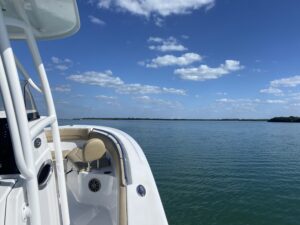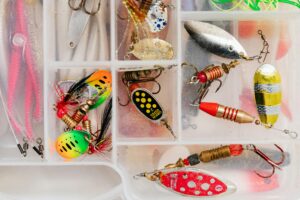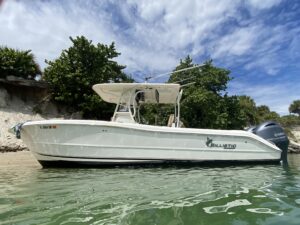If it’s April, it’s time to talk about yellowfin tuna fishing in South Florida. The season begins in mid April. Wild-caught Atlantic yellowfin tuna is not only delicious and rewarding to fish for, but it’s a smart seafood choice because it is sustainably managed and responsibly harvested under U.S. regulations.
Where to go Yellowfin Tuna Fishing in Florida?
Are you interested in a yellowfin tuna fishing charter with Gulfstream Boat Club? We would be thrilled to arrange it for you through our partner business, Boatsetter. Boatsetter is an amazing national network of rental boats, and its hub is in South Florida. Call or email us to find out about how to plan an amazing fishing trip—from which you’ll return with a boatload of tuna.
About the yellowfin Tuna…
Yellowfin Tuna Appearance:
- Yellowfin tuna are torpedo-shaped.
- They are metallic dark blue on the back and upper sides, and change from yellow to silver on the belly.
- True to their name, their dorsal and anal fins and finlets are bright yellow.
- Yellowfin tuna can be distinguished from other tunas by their long, bright yellow dorsal fin and a yellow strip down the side. They are also more slender than bluefin tuna.
Yellowfin Tuna Behavior and Diet:
- Yellowfin tuna grow fairly fast, up to 400 pounds, and have a somewhat short life span of about 7 years.
- Most yellowfin tuna are able to reproduce when they reach age 2 or 3.
- Females spawn about once every 3 days during the spawning season. They produce an average of 1 million to 4 million eggs each time they spawn.
- Yellowfin tuna feed near the top of the food chain on fish, squid, and crustaceans.
- They are prey for top predators such as sharks and large fish.
How to Catch Yellowfin Tuna?
Whether deepsea fishing for yellowfin tuna, or other types of fish, it is good to keep in mind these ten tips, courtesy of Boatsetter:
- Check out the reefs and wrecks. The small fish that live among shipwrecks and natural and artificial reefs are prime targets for big fish. This is your chance to nab a big fish in its own hunting grounds.
- When fishing for yellowfin tuna, keep an eye out for dolphins. The two often travel together.
- If you notice seagulls or other birds flying around a certain area, there could be a school of small fish that they are trying to turn into dinner. In turn, there could be large fish on the prowl for the smaller ones.
- Use fast-trolling lures to catch fast fish like tuna.
- Anchor the boat and drop bait down into the reef to catch fish such as grouper or snapper.
- If you’re bottom fishing, use lures like large heavy-duty jigs to get the bait down deep into the water.
- Use natural or artificial bait to troll around a tower or buoy to get the attention of fish.
- A fish finder, GPS or nautical map can come in handy on deep sea fishing trips. Most sport fishing boats come fully equipped with all of the latest navigational gear and equipment.
- If you’re prone to motion sickness or have never been out on a deepsea fishing boat, it is a good idea to take some type of medication beforehand. If you do start to feel queasy, it is best to stay up on deck in the fresh air and watch the horizon. Don’t go below deck thinking you can sit or lie down. Trust us on this one.
- Finally, take an expert with you. No one, especially an inexperienced boater, should ever be out alone.
Considering a deepsea fishing experience in South Florida? Skip the overcrowded tourist boat and book a private fishing boat with captain through Gulfstream Boat Club’s partner business, Boatsetter. Give us a call at 561.865.7797 to find out more!
#Saltwaterfishing #ExploreFlorida #yellowfintunaseason #Wildlife #FloridaGuide #Saltwater #Fishing #FishingTips #Yellowfintunafish #Nature #yellowfintunainflorida #yellowfintunafishing #BoatingTips


